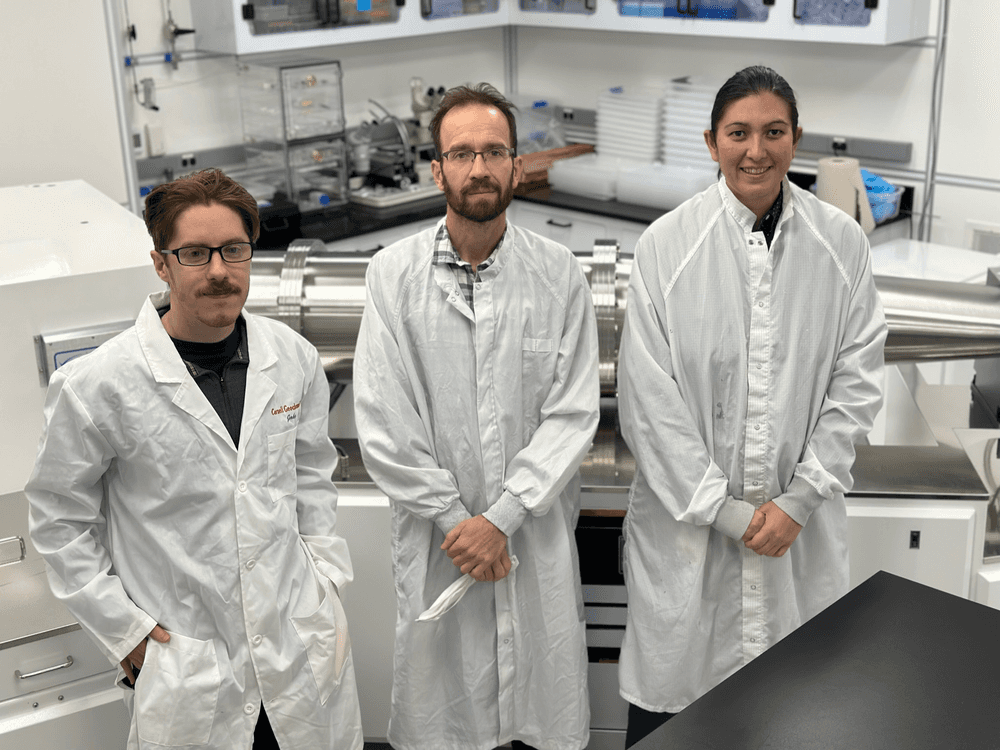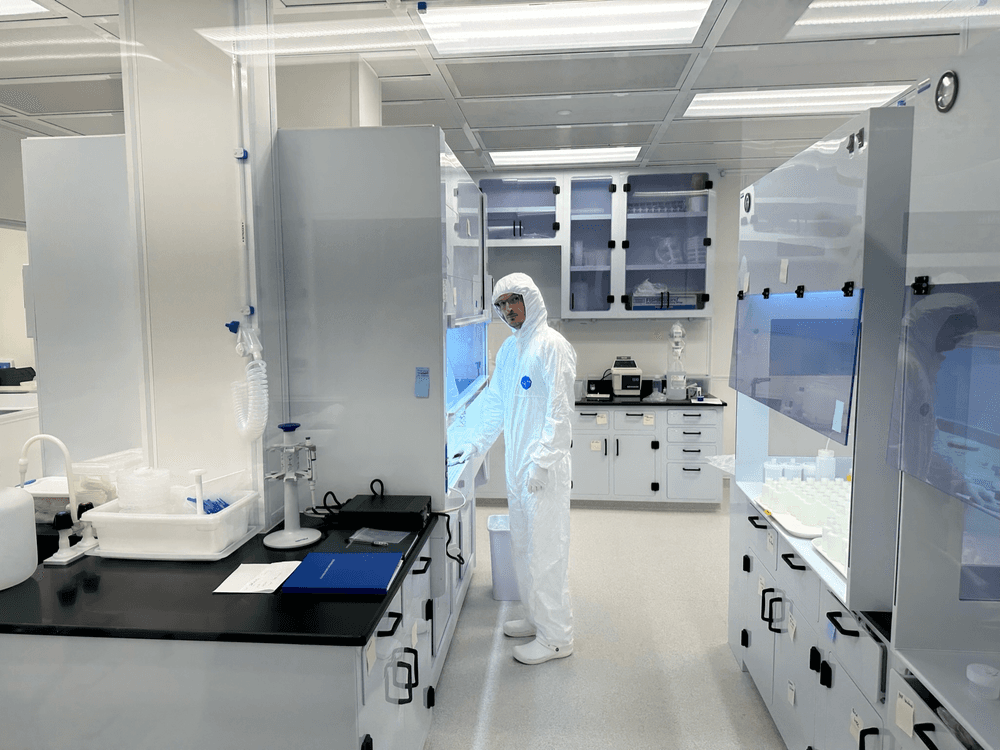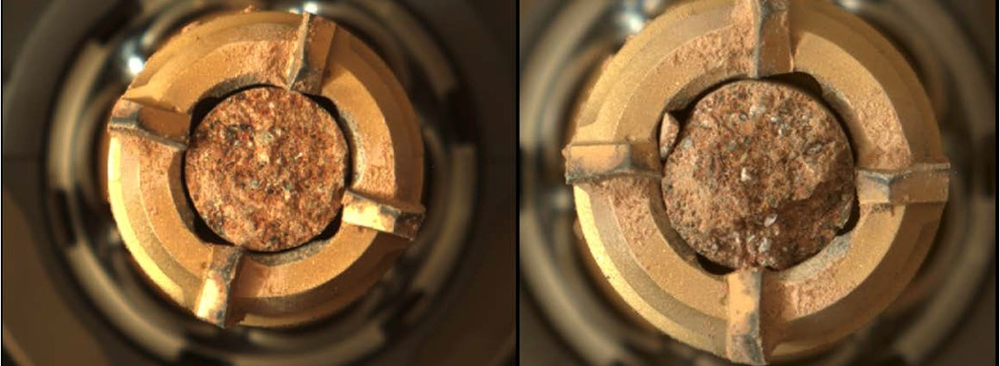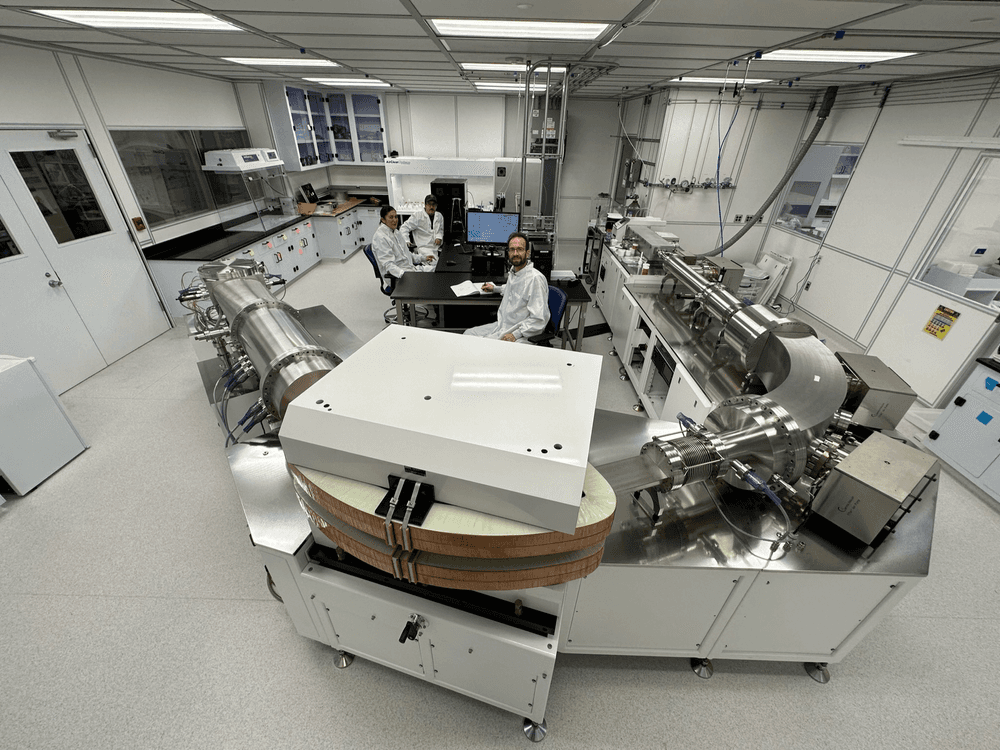Martian Samples to be Analyzed at Johnson's New Research Center
NASA’s Astromaterials and Research Exploration Sciences (ARES) division continues to prepare for future scientific investigations of samples returned from other worlds. “A major step towards these investigation goals has been facilitated by the newly-built laboratories housed by the Center for Isotope Cosmochemistry and Geochronology (CICG) at Johnson Space Center,” said Dr. Eileen Stansbery, Johnson Space Center’s Chief Scientist. “These labs are designed to maximize data research and develop new technology for future sample return missions." The objective is to integrate terrestrial and planetary research and promote successful space missions by mitigating risk.
"We're developing things in the lab that have never been done before to answer the important planetary science questions of today, and these methods require validation," said Dr. Justin Simon, an ARES geochemist and geochronologist. Justin wears many hats in this process since he is also a Mars 2020 Perseverance rover return sample scientist and long-term mission planner.
***

Since the Apollo era, ARES has been working with extraterrestrial materials. Simon, who leads the CICG, specializes in collecting, retrieving, and analyzing lunar and other planetary materials to pave the way for further human space exploration. Simon is pioneering a new era of planetary science by asking questions that will help us understand the history of planet Earth and beyond. He and his team are responsible for transforming Apollo-era labs into next-generation space labs.

This type of research helps to understand when and how the solar system formed and the processes that transformed nebular dust and gas into planets. Investigations of ancient planetary materials also provide insight into the potential habitability of other worlds. The key objectives for NASA’s Mars missions are to search for signs of ancient microbial life and to characterize the planet's geology. Artemis, as well as the Mars Sample Return program, will explore the Moon's and Mars's geological history and bring more samples to Earth for laboratory analysis.
***

Simon and his team conduct experiments to make precise isotopic ratio measurements recorded in the extraterrestrial rock record. The CICG facilities include three mass spectrometers, two laser ablation systems for high spatial resolution analyses, dedicated sample preparation laboratories, and a metal-free clean chemistry laboratory to measure a variety of elements and their isotopes at high precision. The mass spectrometry measures isotope variability in extraterrestrial samples to identify the underlying chemical processes of their formation. These measurements tell scientists the origins of otherworldly materials and how they formed over time. "It's like reading tree rings. Each chemical process creates an isotopic signature recorded by the rocks," said Simon.
Simon also helps lead Johnson’s investigations performed by the Apollo Next Generation Sample Analysis Program, or ANGSA, which examines lunar samples, "The ancient lunar materials set the stage for planet formation discovery," said Simon. "The Moon is like a canvas. We are using these ancient rocks to unravel the story of how our Solar System was formed over time. The measurements and observations we make in the lab are truly new and help answer fundamental questions."
***

Research Opportunities in Space and Earth Science (ROSES) solicits basic and applied research funded by the agency's Science Mission Directorate. ROSES awarded ARES a grant to help advance technological capabilities for future terrestrial and planetary research. Collectively, this competitively sought funding has enabled this vision to become a reality. ARES, as well as the broader Johnson community, participated in the building renovations over the last 7+ years. "Every person is critical in this mission. It wouldn't be possible without all the people involved," said Simon. These forward-looking facilities represent core capabilities for the future of sample investigation technology. NASA is prepared to train and inspire the Artemis Generation, "It's remarkable how much discovery is made from a fresh set of eyes and perspective," said Simon. The research the ARES division continues to propel aims to help advance scientific discovery and revolutionize humanity's understanding of our universe.







